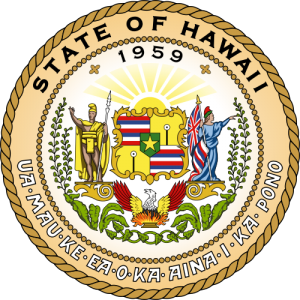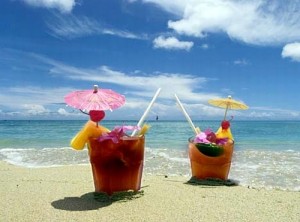 Hawaii Population 2013
Hawaii Population 2013
The United States Census Bureau estimates that the population of Hawaii in 2013 was 1,374,810, which is ranked the 40th largest population in the United States. This estimate shows a 1.1% increase since the last census in 2010, also conducted by the United States Census Bureau. The population density of the state is 214 people per square mile, ranked 13th largest density in the United States.
Hawaii Population Projections
By the year 2015, the population is expected to reach approximately 1.42 million people, which is an approximate 3.2% increase from the current population. By the year 2020, the population is expected to reach 1.48 million people, which is an approximate 7.8% increase from the current population. By the year 2025, the population is expected to reach approximately 1.54 million people, which is an approximate 12.3% increase from the current population. By the year 2030, the population is expected to reach approximately 1.6 million people, which is an approximate 16.6% increase from the current population. By the year 2035, the population is expected to reach approximately 1.66 million people, which is an approximate 20.6% increase from the current population. By the year 2030, the population is expected to reach approximately 1.71 million people, which is an approximate 24.4% increase from the current population.
Hawaii Land Mass
The state of Hawaii is approximately 1,523 miles long with a square area of 6,423 making it the 47h largest state in the Untied States. However, it is the world’s longest island chain. Of the 6,423 square miles, only 36 square miles are covered by water. The highest point in the state of Hawaii is Mauna Kea, which reaches 13,796 feet above sea level. The lowest point in the state is at the Pacific Ocean, reaching sea level. The geographic center of Hawaii is located off the southwestern shore of Molokai, west of Lanai. Since Hawaii is an island, it does not border any states; but, the islands are off the west coast of the landmass of the United States.
The island chain is a chain of 132 islands on top of a submerged volcanic mountain. These islands are broken up into 3 groups. The first group consists of the eight main islands: Hawai’i, Maui, Kahoolawe, Molokai, Lanai, Oahu, Kauai, and Niihau. The second group is made up of the middle islands, which are just tiny islets of rock. The last group is made up of the islands in the northwest, which are made up of coral and sand.
Hawaii Demographics
Of the approximate 1.37 million people in the state of Hawaii, about 49.6% of the population is female, while 50.4% is male. The largest racial group in the state of Hawaii is the Asian demographic. About 38% of the population is Asian. Also, approximately 26% of the population identifies as white (including Hispanic or Latino). But, out of that 26%, only about 10% do identify as Hispanic or Latino and the other 16% as Caucasian. Those that identify as Black or African American make up only 2% of the entire population of the state of Hawaii. About 10% of the population is Native Hawaiian or some other Pacific Islander. However, about 23% of the population claims to be of two or more races. Lastly, the remaining percentage of the population identifies as American Indian or Alaska Natives.
Hawaii Religion
The population of Hawaii identifies as religious at a slightly lower rate than the national average. About 41% of the state population identifies as religious, compared to the national average of 49%. Out of the 41%, about 18% identify as members of the Catholic Church, making it the largest denomination in Hawaii. About 5% out of the 41% identify as members of the Church of Latter Day Saints, otherwise known as Mormonism. Also, 5% out of the 41% identify as members of some Eastern religion. All the other Christian denominations make up about 12.9% of the population. Those who identify as Jewish or Islamic only make up 0.1% of the population.
Hawaii Tourism Authority

Hawaiian Cuisine
The cuisine of Hawaii is one that is like the culture of the state and the culture of the United States: mixture of all different things from different places. Immigrants to the state brought different influences, including cuisine choices. Therefore, Hawaiian food ranges from American to Chinese to Polynesian to Portuguese influence. The luau favorite happens to be a kalua pig and beef, served with curry.
Hawaiian Islands
- Arched Rock 19.23444°N 155.90090°W
- Coconut Island (Moku Ola) 19.73250°N 155.07139°W
- Hawaiʻi 19.50056°N 155.50056°W
- Kalaemano 19.48005°N 155.93738°W
- Kaluahee Rock 19.29222°N 155.89130°W
- Kaopapa 19.46833°N 155.92500°W
- Kauhuula 19.18083°N 155.42417°W
- Kaula’ināiwi Island 19.73500°N 155.07250°W
- Kawelohea 19.08583°N 155.55361°W
- Keaoi Island 19.27083°N 155.25667°W
- Kipu Rock 19.44667°N 155.92333°W
- Kawelohea 19.08583°N 155.55361°W
- Kuhulu Rock 19.29000°N 155.89250°W
- Laahana 19.19333°N 155.39944°W
- Lepeamoa Rock 19.33944°N 155.88806°W
- Mahikea Island 19.73778°N 155.03167°W
- Mokuhonu 18.94694°N 155.69778°W
- Mokuokahailani Rock 19.18250°N 155.43667°W
- Mokupuku 20.19528°N 155.70250°W
- Opihi Rock 19.58250°N 154.91472°W
- Pa’akea 18.96944°N 155.61444°W
- Paokalani Island 20.19500°N 155.70528°W
- Pa’akea 18.96944°N 155.61444°W
- Pohakulua 19.91667°N 155.89750°W
- Pulehua Island 18.96667°N 155.62306°W
- Reeds Island 19.72722°N 155.09806°W
- Wahinemakanui 19.66528°N 154.97917°W
Other Resources
Learn more about the Hawaiian Island populations here


